If there was one takeaway the 10 participating Red Charity Gala designers probably reached or were again reminded of after the show, it’s never to compare yourself with others. Otherwise, you’d likely end up losing your way as a designer by producing pieces that are far removed from who you are and what you do.
By Alex Y. Vergara
Ten of the country’s leading designers were handed double-edged swords recently, and for the most part they acquitted themselves quite well with their respective collections. Inspirations, which varied from Chinese to Japanese, Portuguese to African, old Hollywood to the death of purveyors of Filipino heritage and culture, were mere vehicles for them to reaffirm their respective styles, technical prowess and sense of aesthetics.
The event-slash-showdown, of course, was last week’s Red Charity Gala at Shangri-La at the Fort. Organized by the indefatigable duo of Kaye Tinga and Tessa Prieto-Valdes, the annual gathering seeks to generate funds for charity through ticket sales and a series of auctions.
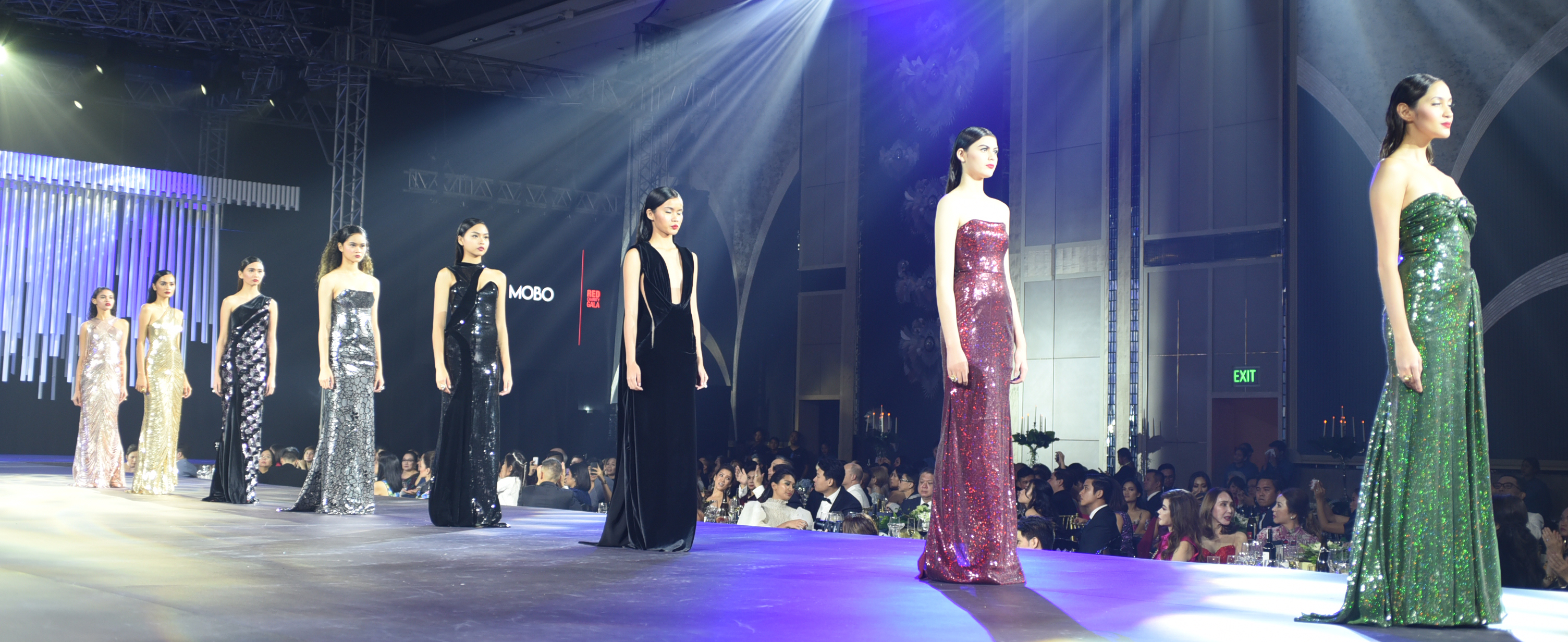
To bring the well-heeled crowd in, each edition is capped off by a fashion show featuring a seasoned designer. It has been like this since 2009 with such names as Dennis Lustico, Michael Cinco, Cary Santiago, Jojie Lloren and Rajo Laurel, to name a few, showing a 40- to 50-piece collection following a particular theme. This year’s edition was again directed by Robby Carmona and supported by Bench.
To celebrate a decade of partnership, Kaye and Tessa, whose respective fashion sense, we should say, are poles apart, decided to shake things up by featuring all ten designers, including Furne One, Ezra Santos, Lesley Mobo, Chito Vijandre and Joey Samson, in one show. Of course, for each featured designer to show 40 pieces was out of the question. Nevertheless, it still ended up as the Red Charity Gala’s biggest show to date despite each designer showing only eight pieces.
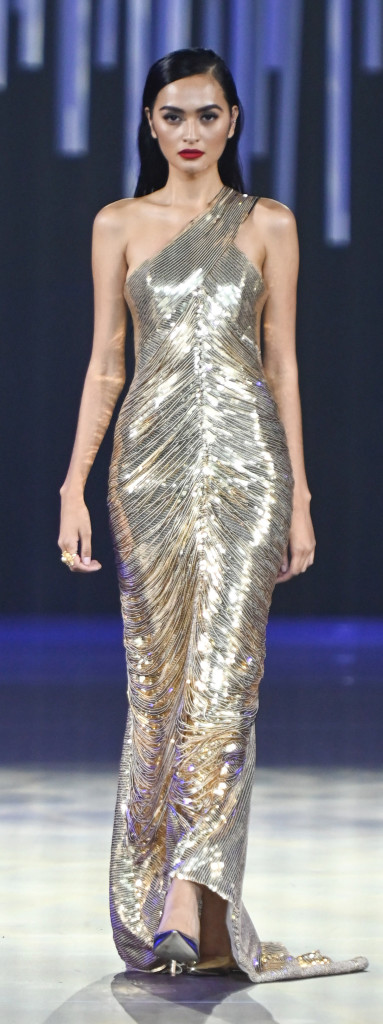
Biggest show to date
Because if you do the math, eight pieces multiplied by 10 designers already amounted to 80 looks or nearly double the number featured in a typical year of mounting the much-awaited October event. From what we gathered, it was both a relief and a challenge for most of the designers. A relief since they didn’t have to wrack their brains or put on hold their respective businesses like they normally would had they been asked to produce a 40-piece collection.
For obvious reasons, the gathering also presented a number of challenges to them. Apart from sharing the ramp with their esteemed colleagues and being unable to take total control of the show, each designer had to wow the audience while telling their respective stories through eight looks. No more, no less. In short, there was no room for even a middling piece because each look should count.
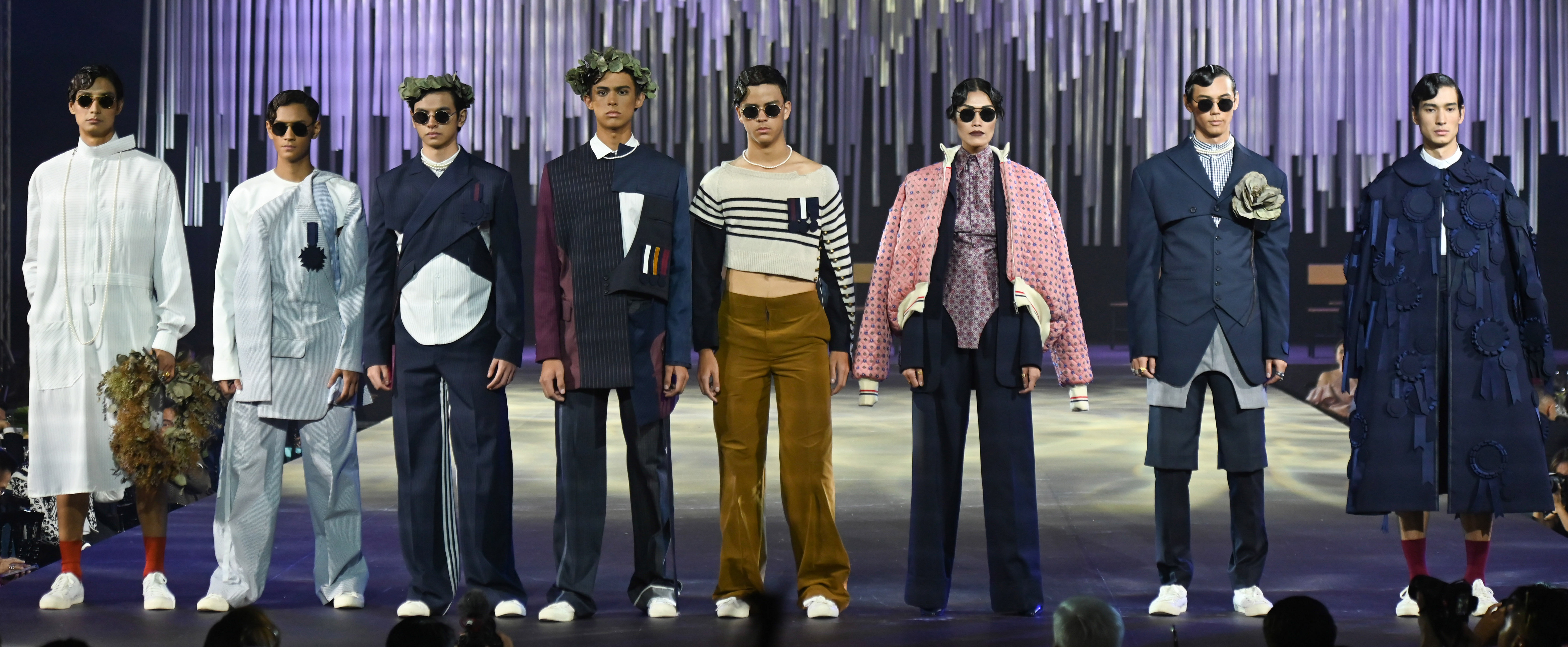
One designer reportedly wanted to show 10 looks, but was thumbed down by organizers. Instead of worrying needlessly thinking of what the others would show, London-based Lesley, whose “exploratory” collection was inspired by “femme fatale heroines from old Hollywood,” decided to simply enjoy the process.
“Jojie, Joey and I were just laughing and having a good time backstage,” Lesley shared. “I think our clothes were the breaker. Otherwise, the entire stage would have collapsed from the weight of all the other big pieces.”
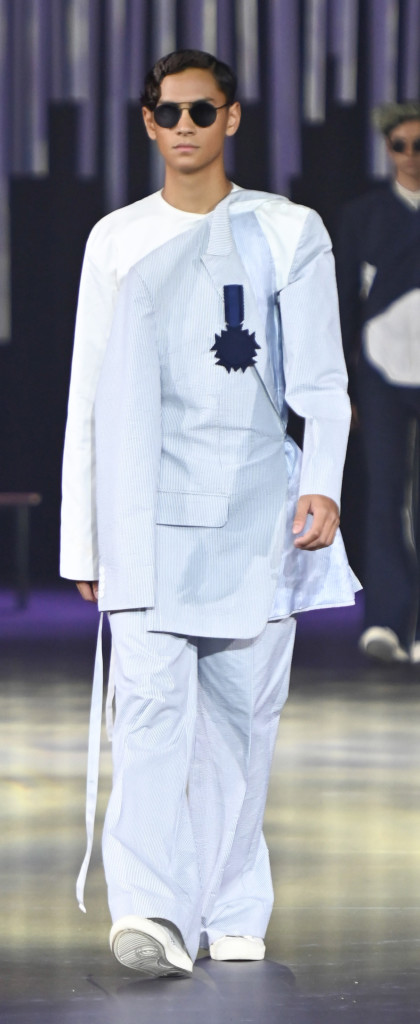
Of course, he was just kidding. Lesley, like his colleagues, stayed true to his sense of aesthetics by producing small, barely there columns made of shiny fabrics like velvet as well as dresses studded with tiny paillettes.
The collection was his ode to 1940s Hollywood. Some of the dresses, he continued, were seamless to give them a “clean, sleek look.” Since a number of dresses were cut from a single piece of material, it made the fabric more difficult to manipulate. Even the colors, which ranged from black to emerald green, red to gold, were representations of the introduction of “technicolor” to what used to be black-and-white film noir.
“I envisioned my models to have just emerged from the swimming pool moments after jumping into it with their gowns on,” Lesley said. “Hence, their hair was made to appear wet and the fabrics made to look like liquid from afar.”
It was a visually strong collection with a cohesive look weakened noticeably by the designer’s choice of models. Since it was a big show, there was a mad scramble for models among participating designers and Lesley, who came in late, had to make do with whoever was left.
Seize the day!
Joey also drew inspiration from Hollywood, but from a totally different time, genre and look. His collection of men’s wear pieces was inspired by the movie “Dead Poet’s Society” with “insertions” of Shakespeare’s “Midsummer Night’s Dream.” To realize his vision, he used various suiting materials, from pinstripes to checks, athletic knits to Breton stripes, vintage ties and hanky prints.
To the untrained eye, his looks may come off as works in progress, but the collection, Joey added, was another attempt on his part to “decode” classic tailoring by focusing on structure and detailing, “pinning it down to its core.” Again, the designer was able to bring his points across by showing in a number of ways how a seemingly easy craft as tailoring, in reality, requires utmost precision and attention to details to pull off.
“My collection for Red Charity in 2017 was more focused in pleasing a certain market,” Joey said. “This year, it was really more about pleasing myself and the ones who truly understand why I do what I do.”
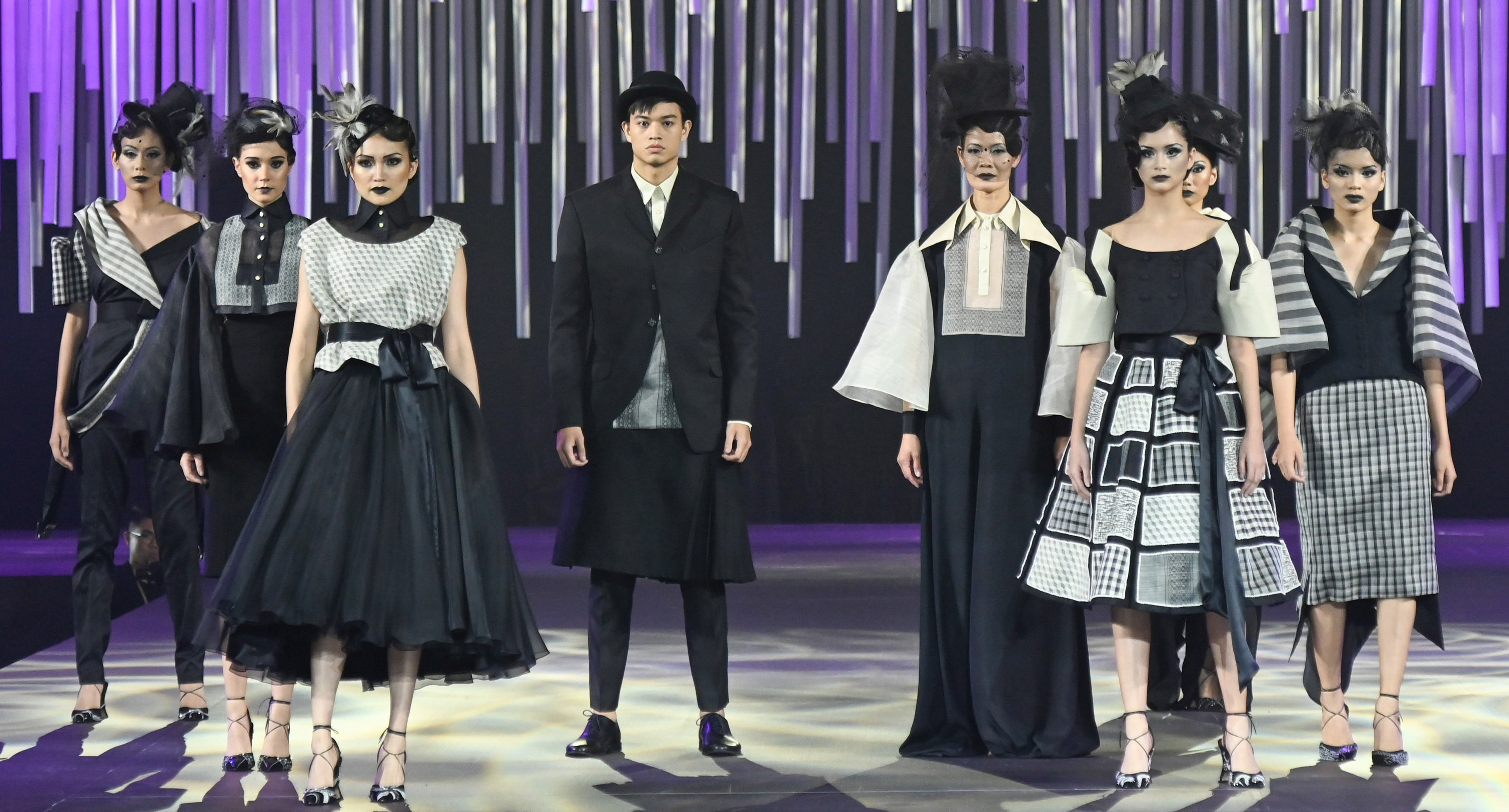
Jojie, another designer who chose to remain true to his core strengths, which consisted primarily of tailored pieces in neutral shades, channeled the “sad state of our country and demise of people who championed our heritage and culture.”
Even his choice of a title was very telling: “Sweet Dreams…Ora Pro Nobis.” To realize his vision, the Paris-trained Jojie used piña and piña blends as well as various types of satin and dupion to “reengineer” various parts of the Filipino costume.
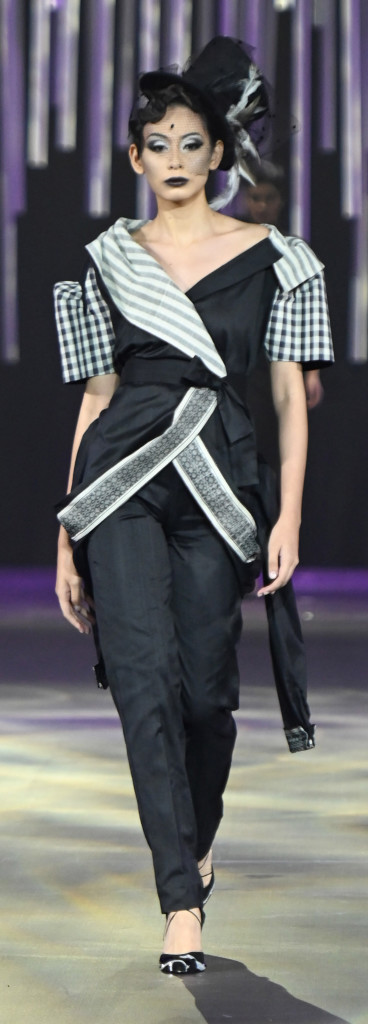
“Thus, the panuelo became the collar, sleeve and upper-back bodice in one patterned piece,” he shared. “One sleeve is a hybrid of the butterfly and raglan sleeves. Other pieces blended elements from two Filipino costumes.”
They were well-made pieces, no doubt, but we found the collection too somber-looking because of the designer’s decision to limit it to black and white. Again, as he revealed earlier, he did this for a reason.
“What makes this collection a reflection of me is that it came from my innermost feelings and sentiments. This collection is mournful in contrast to the first one I did five years ago, which was celebratory,” Jojie said.
But it wouldn’t be a Red Charity Gala without its share of volume and bling, drama and visual gimmicks. The likes of Furne, Michael, Cary and Ezra, Filipino designers who made a name for themselves in the Middle East before becoming household names in their own country, gladly stepped in. Not to be outdone, Manila-based designers Dennis, Rajo and Chito also went either big or colorful, or both.
Flying daggers, see-through jackets
Dennis’ colorful collection, which consisted of beautiful and oversized see-through jackets made of crinoline, among other pieces, was inspired by Chinese director Zhang Yimou’s period drama-slash-fantasy film “House of the Flying Daggers,” particularly lead character Mei (played in the film by actress Zhang Ziyi).
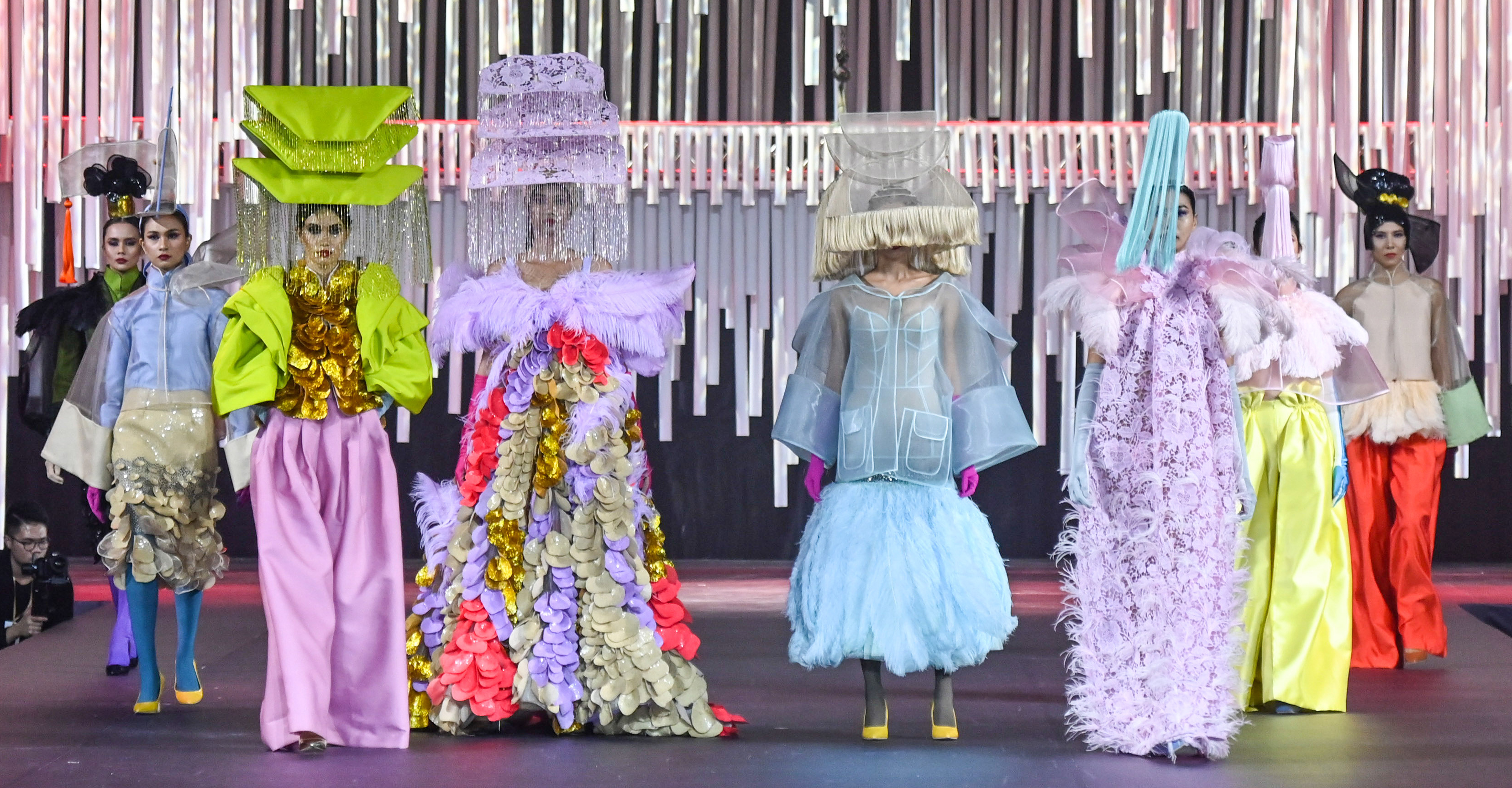
“I took note of the film’s aesthetics and texture as well as Mei’s personality and emotions,” he said. “Whenever I create a collection, it has become a standard for me to use a wide array of materials and colors. I like playing around with textures, contrasts and silhouettes.”
This time, he experimented with crinoline, a material commonly used as a petticoat or volume enhancer, as outer wear. To give them an air of luxury, he enhanced the texture of his hand-made petals through beadwork. Dennis also shared with PeopleAsia that he had ostrich feathers dyed in several colors since the shades he wanted weren’t commercially available. He also incorporated such materials as duchesse satin, Viennese lace and silk organza in his pieces.
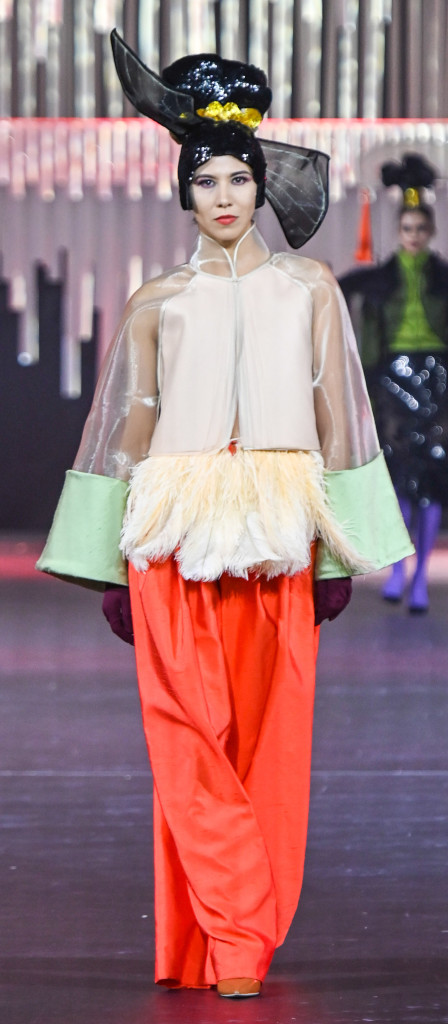
Dennis, who opened the show since he was the first Red Cross Gala designer to be featured way back in 2009, considers his collection back then as “safe and classic in terms of materials, colors and silhouettes.”
“This time around, I decided to be more playful,” he declared. “Shapes are more daring, colors are bolder and textures are more challenging.”
Wakandan royalty?
If Wakanda were a real country, chances are its elite women would be wearing Furne’s iconic gold-colored collection, complete with billowing capes, oversized hoodies and dangling beadwork, on special occasions.
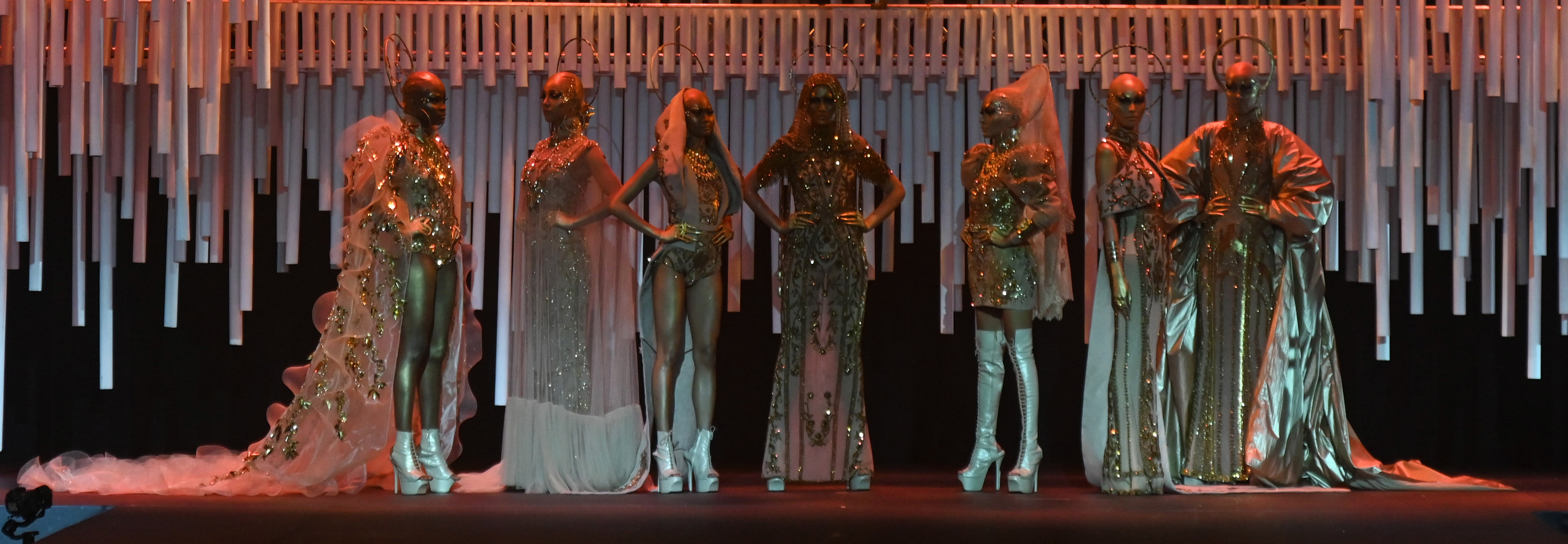
Despite his models’ simulated bald hairdo and Amazon warrior vibe, Furne actually derived inspiration not from the fictional African country, but from the golden igreja de Sao Francisco (church of San Francisco) in Portugal.
“I used mainly tulle with Swarovski crystals mixed with raw linen and metallic paper cloth,” he said.
Although the looks, very strong and trademark Furne, were reminiscent of the designer’s first outing for Red Charity Gala way back in 2010, he insisted that the entire collection is totally new.
“One look was worn by Catriona Gray for a shoot in New York, while another one was worn by Maymay Entrata for the ABS-CBN Ball,” Furne shared.
Furne’s fellow Dubai-based designer Michael Cinco, after a trip to Jaipur, India, was so fascinated with the “beautiful culture of the maharajas in Rajasthan,” and this fascination was reflected in his collection’s vibrant colors, labor-intensive volume and rich textures.
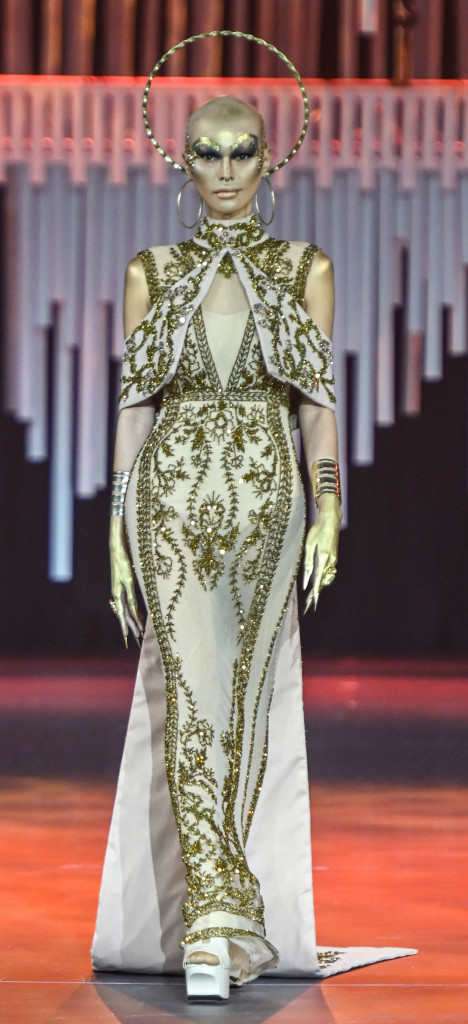
“I used a lot of shirred tulle, which were then sewn into pieces to achieve the electric-pleated effect on the gowns,” said Michael. “The flounced and ruffled cut-on-the-bias skirts are very Michael Cinco. The use of ombre colors is also very me.”
In contrast, his Red Charity Gala collection in 2011 was inspired by the gods and goddesses of Greece. Thus, Michael used a great deal of white and shades of gold on more structured silhouettes back then.
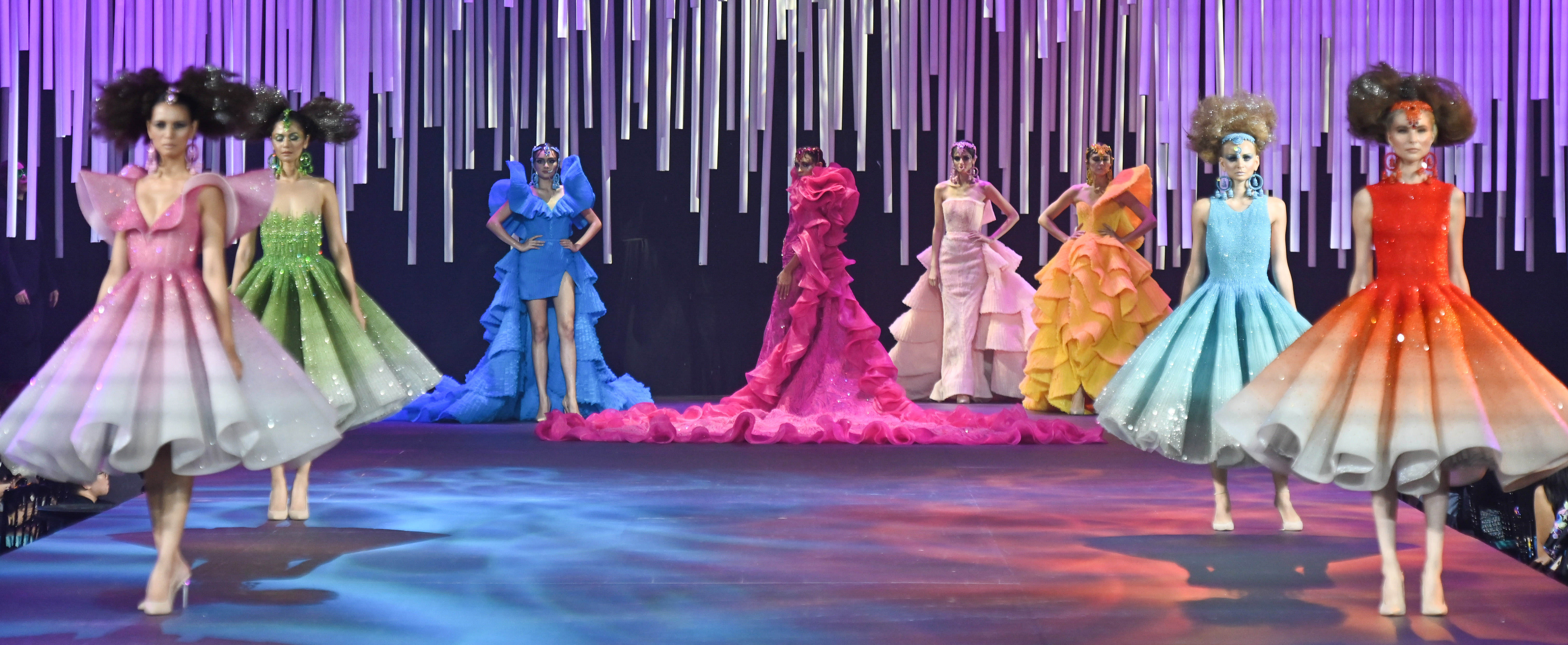
“This time,” he continued, “I used a lot of vibrant colors and more feminine and softer silhouettes. A number of voluminous ballgowns come with never-ending capes accented with traditional Indian accessories. Just like during the time of the maharajas.”
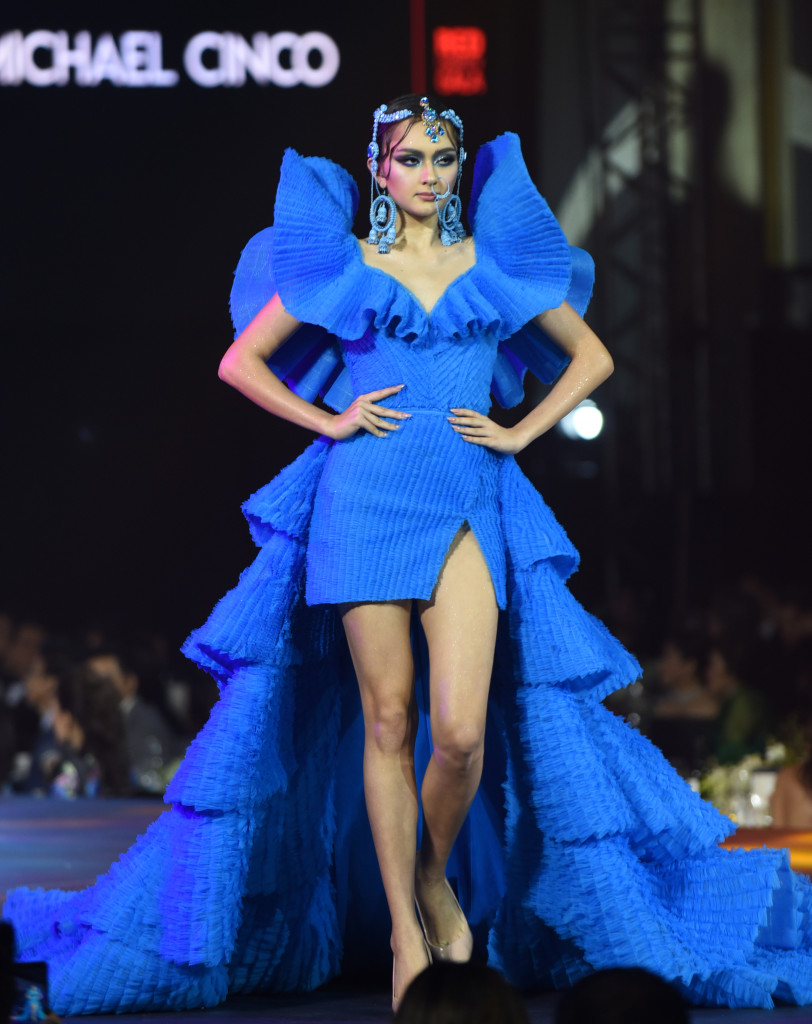
Seeing double
Cary, always a man of few words, when asked what his Japanese-inspired collection was all about, gave a terse reply via text message: “Japan, geisha dolls, real Japanese silk brocades, gazar.”
A craftsman and a showman through and through, Cary’s collection, consisting mostly of neutral-colored draped and flowing silk gazar pieces embellished with pops of shiny and colorful Japanese silk brocades made to look like they were kimonos worn by trompe l’oeil geisha dolls, was a guaranteed crowd pleaser and easily one of the evening’s most applauded.
![Cary Santiago, craftsman and showman par excellence, turns [to] Japanese and does it again.](http://peopleasia.ph/wp-content/uploads/2019/10/DSC_0446-1.jpg)
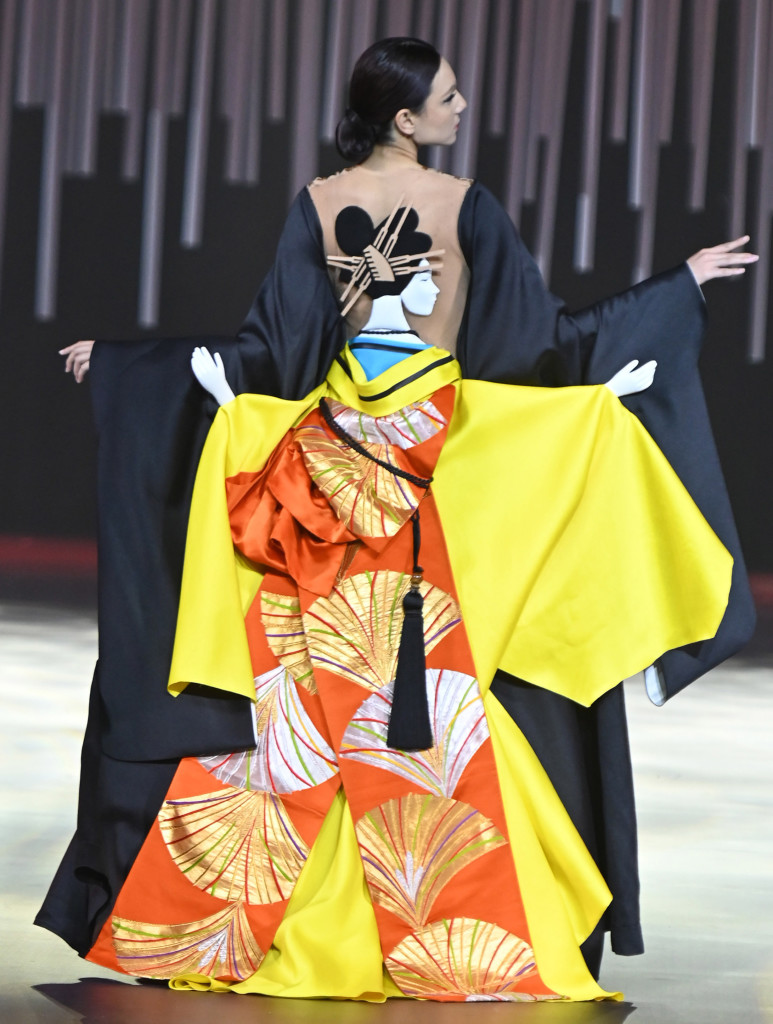
Ezra, another local talent who made a name for himself in Dubai, was unable to answer our questions as of press time. According to stylist Noel Manapat, based on his Instagram posts, the designer channeled, among other inspirations, a temptress in disguise as well as an Arabesque bride to produce a glittery and dreamy collection.
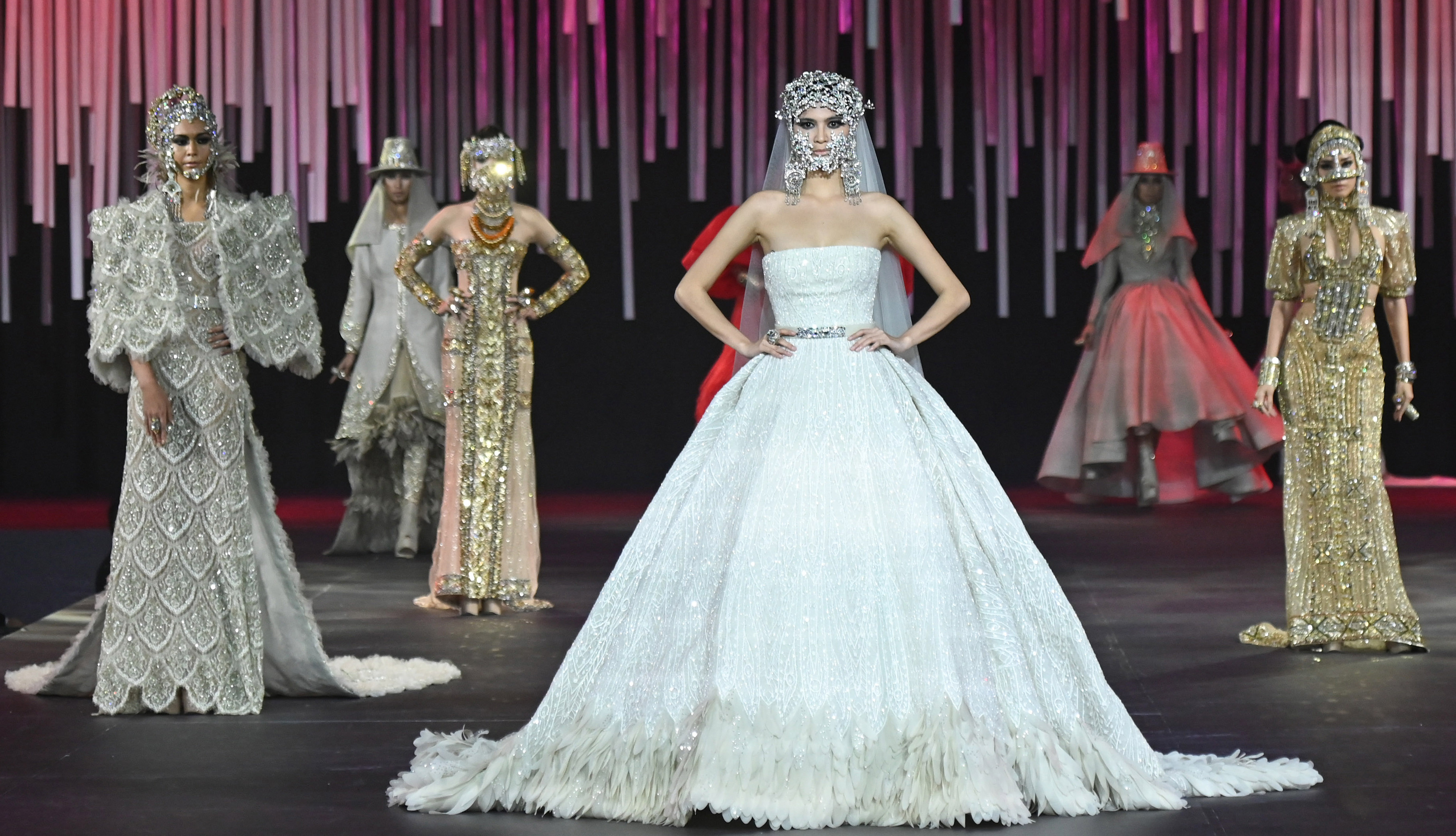
The worldly Chito, who was forced to come out of retirement as a fashion designer only for Red Charity Gala, as expected, produced nuanced pieces loaded with colors, shades, textures and shapes that summed up his travels through the “Four Continents.”
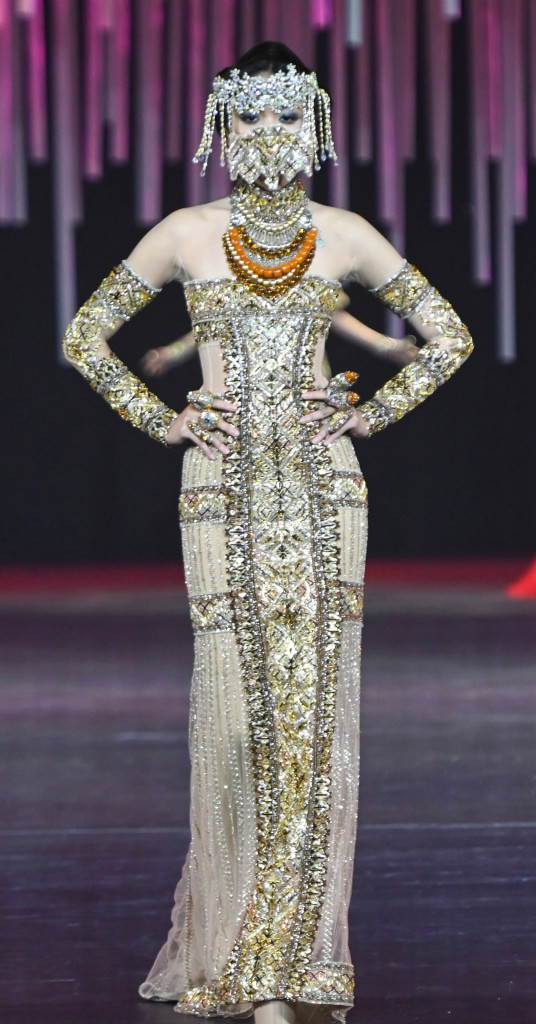
“It’s how I experienced the world through my lifetime, imaging beautiful women traversing amazing lands,” said Chito. “My last show for them was based on Philippine history, arts and culture, while this one has a world view.”
In a way, Chito also showed the possibilities of how two supposedly opinionated and fashion-forward individuals, no matter how similar their cultures and backgrounds are, would almost always end up dressing differently.
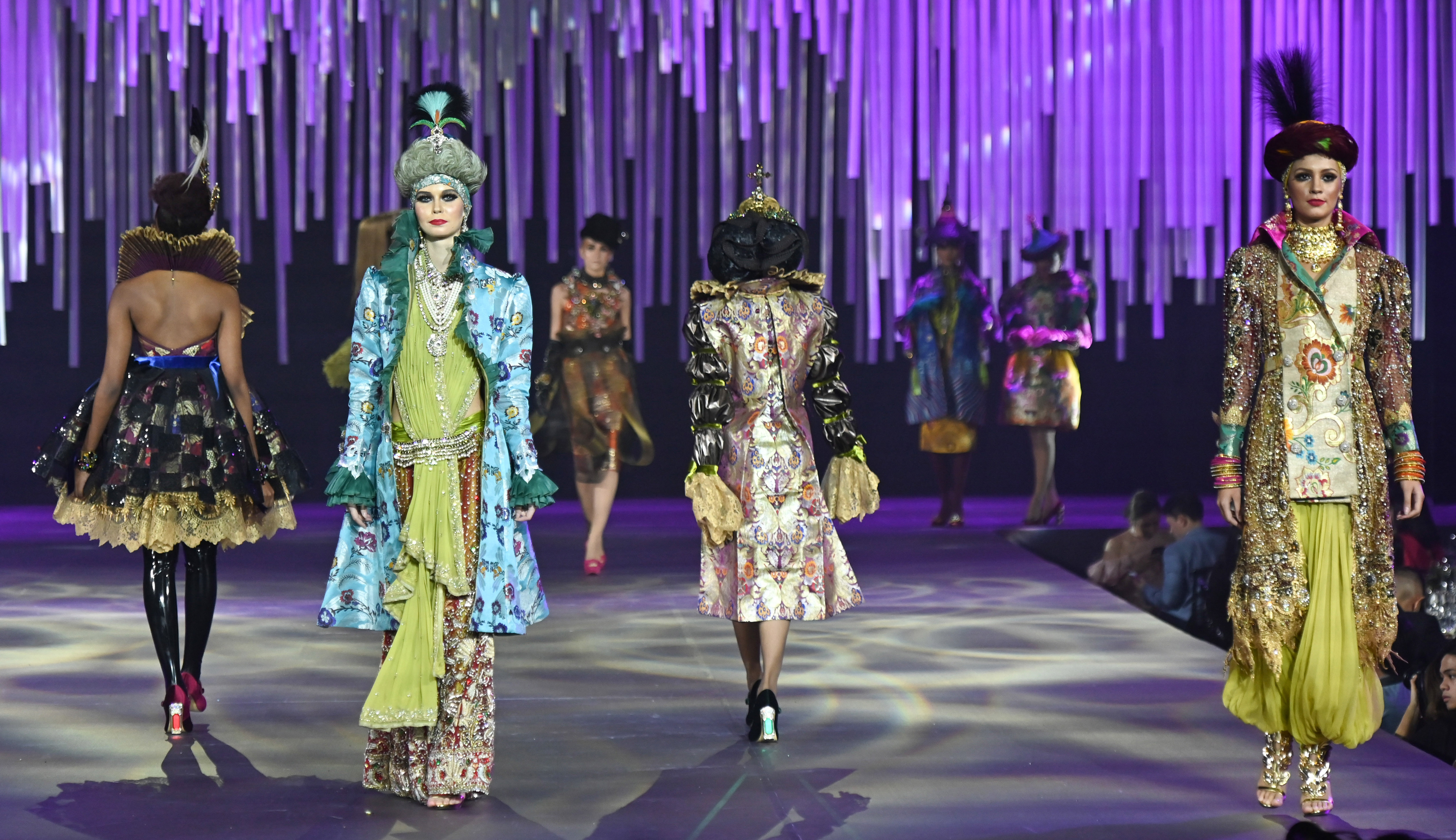
For his collection, he used various brocades, silk chiffon and Indian sari fabrics as well as metal thread embroidery.
“It’s my trademark mix of cultures, colors, patterns and textures with particular attention to jewelry and accessories,” he said, referring to the materials and accessories that make up each look.
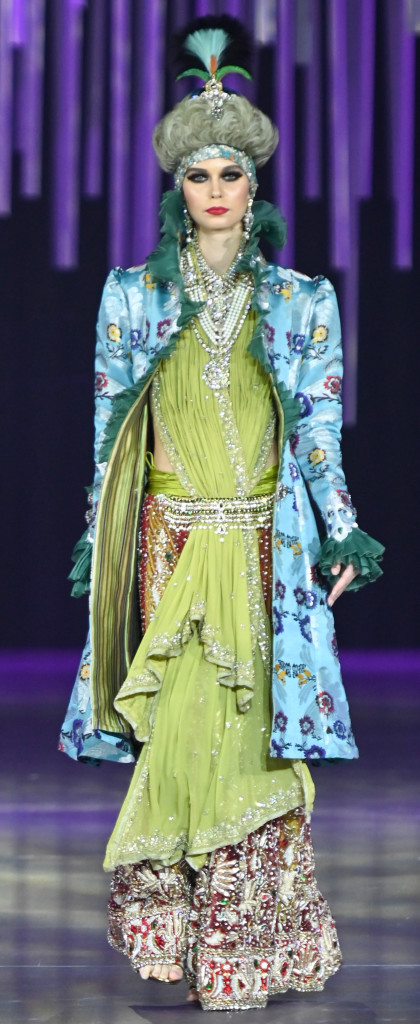
Finally, Rajo, who had the unenviable position of closing the huge show as its finale, drew unlikely inspiration from Aklan’s Ati-Atihan Festival with a fringy collection he dubbed as “Hala-Bira.”
“I wanted to capture the energy, spirit and joy of that celebration,” he said. To achieve the fringy details that characterized most of his dresses, Rajo used raffia/straw, which he commissioned imprisoned women in Mindanao to produce.
The technique, he continued, involved weaving materials together and creating color patterns, which he and his team shredded to create textural fringes. The patterns were further enhanced through hand-beading using wood and metal beads.
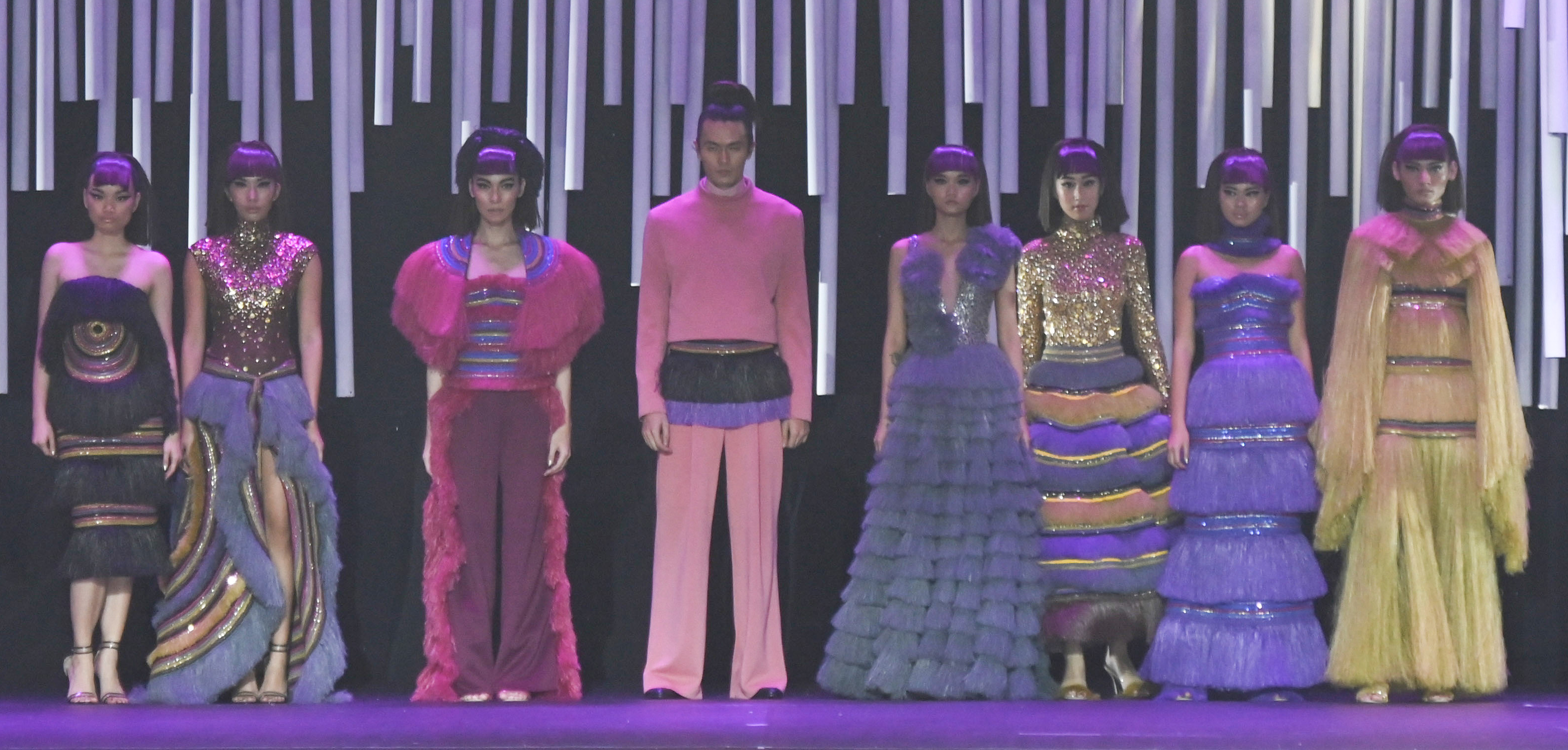
“The codes and the DNA of the collection, from the silhouette and shapes, have always appeared in my body of work,” he shared. “In a way, these are signature elements that embody my design aesthetic and philosophy. They’re very different from my collection last year (also for Red Charity Gala), as it is more focused on a singular technique and story.”
The longish event was capped off by a touching moment that ultimately became a rare photo opportunity: the participating designers, with the exception of Dennis, who was out of the country last week, marching down the runway arm-in-arm, hand-in-hand before taking their group bow at the foot of the ramp.
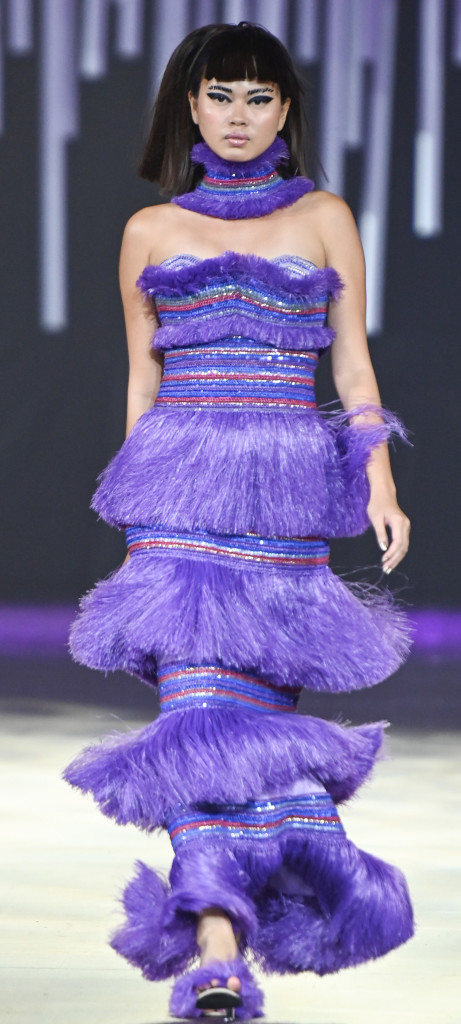
If there was one thing they learned or were again reminded of after the show, it was probably this: comparing yourself with others is a useless form of exercise, as it distracts you from focusing on your own strengths and design aesthetics to help you produce a cohesive and knockout collection. At the end of the day, your best friend (or worse enemy, as the case may be) is yourself whom you always try to outdo, wittingly or not, with every collection without totally veering away from who you are as a designer.






